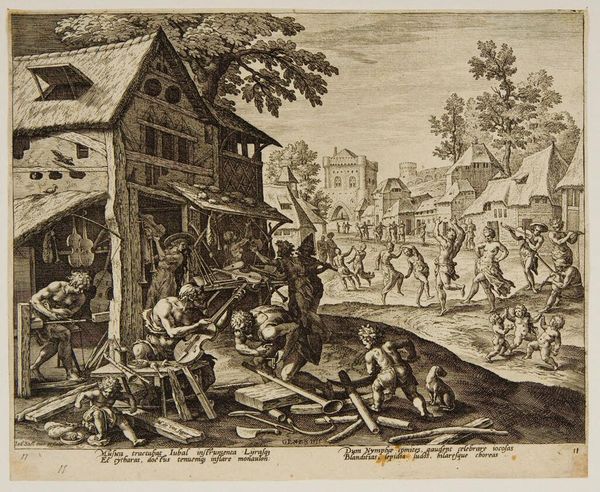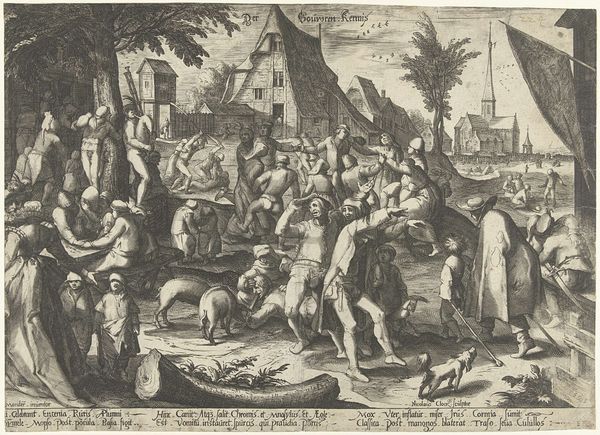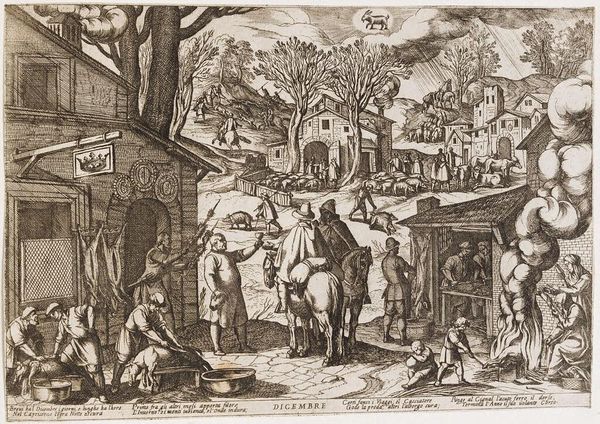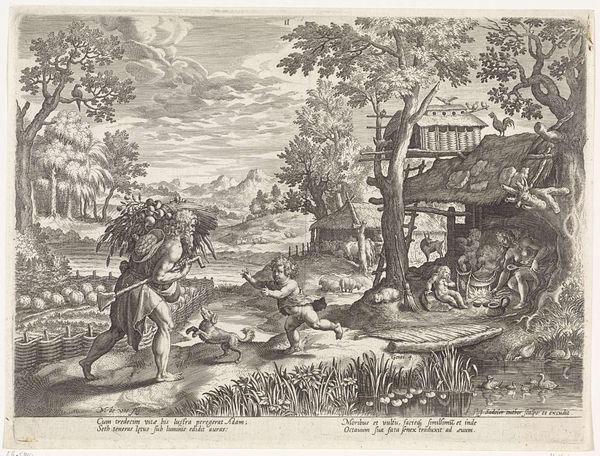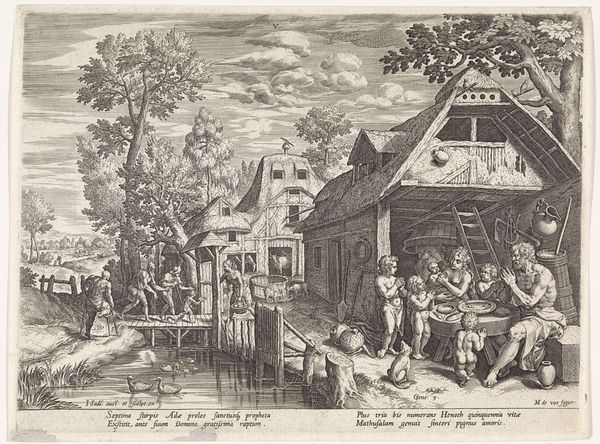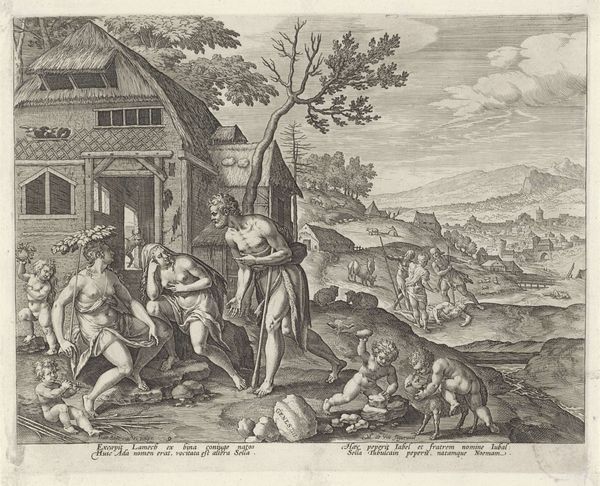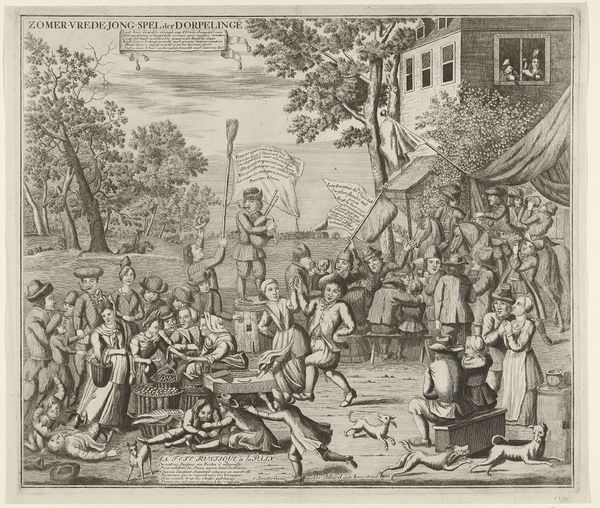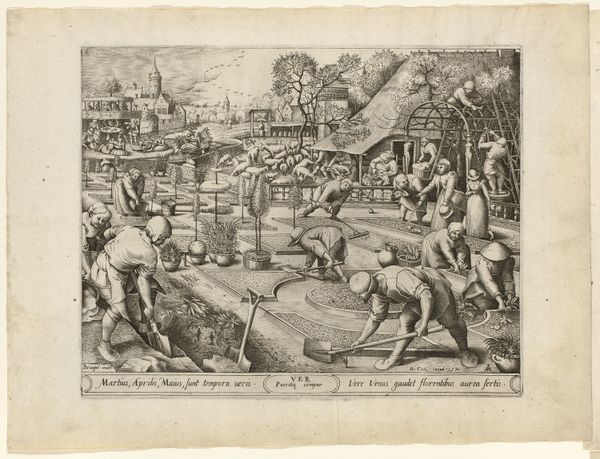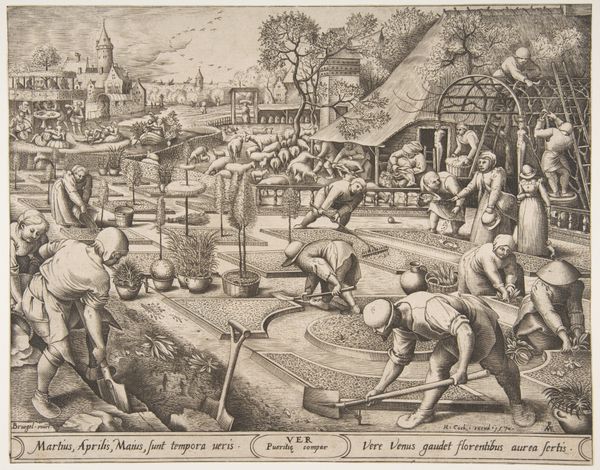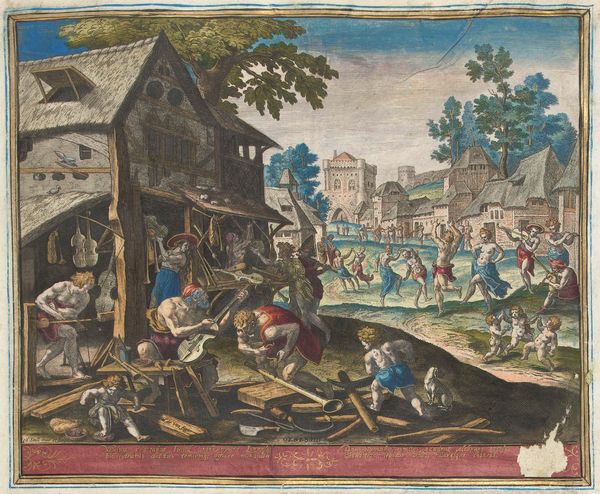
print, engraving
# print
#
landscape
#
figuration
#
genre-painting
#
history-painting
#
northern-renaissance
#
engraving
Dimensions: height 202 mm, width 251 mm
Copyright: Rijks Museum: Open Domain
Curator: Johann Sadeler I brings us "Jubal en zijn gezin maken muziekinstrumenten," an engraving from 1583, currently housed at the Rijksmuseum. Editor: The scene unfolds with a delightful busyness; it’s almost chaotic, yet orderly, if that makes sense. I'm immediately drawn to the duality of the scene—the act of creation paired with communal celebration. Curator: Indeed, it depicts Jubal, a figure from the Book of Genesis, often considered the father of all those who play musical instruments. The print visualizes that founding myth, emphasizing the artisanal and familial nature of music's origins. Note how he’s positioned within a classical architectural setting, symbolic of progress and enlightenment emerging. Editor: Ah, that makes more sense. So, we have Jubal and his family crafting instruments, but it seems like the entire village is also celebrating. I see a kind of social order too: the craftspeople at the core, supported by this lively community, which hints at a division of labour based around musical practice, almost tribal? Curator: I think you are right about its tribal origins; it brings us back to more primeval times when humans celebrated the arts. Observe the positioning of instruments around the building—lutes, lyres; the imagery suggests music as intrinsic to domesticity and social harmony, a reflection of cosmic order. Editor: Except "order" feels almost ironic here. I can't help but think about the power dynamics—who has access to create, who gets to celebrate, and what stories are prioritized. We know access to musical education and expression wasn't available for everyone, and here, Jubal's lineage is celebrated and privileged, almost enshrining his claim to music. Curator: I see your point; access and historical privilege play key roles here. Yet, there's an undeniable universality to this portrayal, too, as seen through the harmony and collaboration to invoke music as a transcendent act. I notice an interesting blend of Northern Renaissance artistic sensibility with emerging elements of genre painting in this work. Editor: And this idea that harmony through making can make space for broader accessibility through public celebration seems pertinent even today. Curator: I concur, its timeless exploration of art, craft, and social unity leaves us much to think about. Editor: I'm struck by the enduring tension it lays bare: art and social order as interwoven, complex strands.
Comments
No comments
Be the first to comment and join the conversation on the ultimate creative platform.
